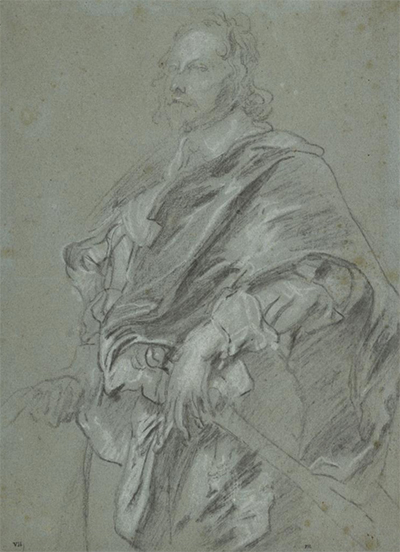Anthony van Dyck used his preferred technique of black chalk with areas hightened with white chalk to add depth and contrast to this drawing
The artist would complete a full oil portrait of Nicholas Lanier in the very same year as this study drawing, 1628. The pose in both is very similar and whilst the drawing went into great detail on the layers of clothing this was only ever intended to be a study piece for the later painting.
This charming sketch can be found in the Scottish National Gallery in Edinburgh whilst the completed oil painting is displayed at the Kunsthistorisches Museum in Vienna, Austria. The artist chose to add a detailed background to the final painting, though the subject's black clothing meant much less detail can be seen in the clothing than in the original study drawing.
There is some evidence that Nicholas Lanier had sat for as long as a week in order for his oil portrait to be completed. This is likely to be true and underlines the extended production process that an artist like Van Dyck would commit to in order to ensure that each of his final artworks were good enough to append his own signature. Whilst seven days may sound extraordinarily long, this was before the days of photography and few other options were available if both subject and artist desired the finest result.
In this drawing Van Dyck pictures the subject holding a glove in his right hand, a symbolic addition, but that region of the drawing was particularly undeveloped. That is explained by how the final oil painting changed that part of his pose completely, with the right hand now being tucked away neatly under his dark coat.
That said, the artist clearly was contented with the left hand pose of the subject, leaving it pretty much unchanged in the final painting. To see the hand perched over the handle of a sword was symbolic of strength and power and very frequent in portraits of this period.




